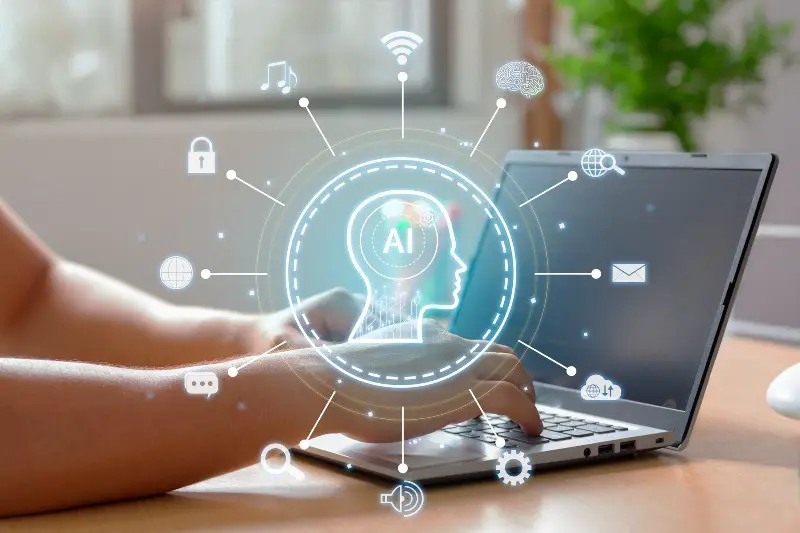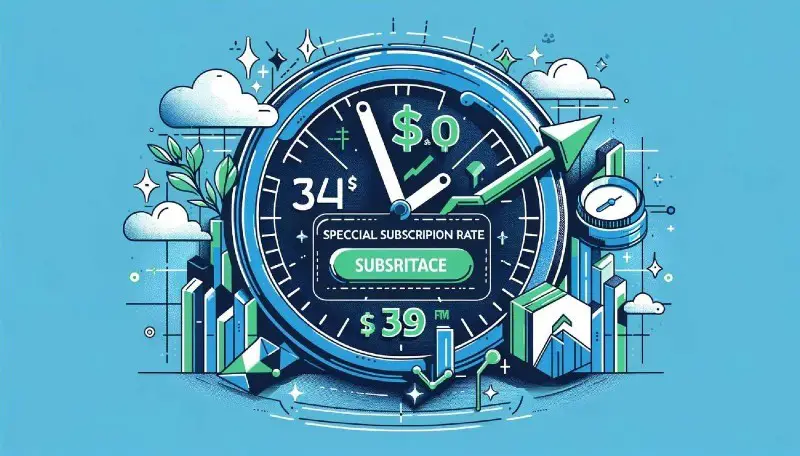Artificial Intelligence (AI) has become a cornerstone of modern technology, influencing various sectors from healthcare to education. Among its many facets, Black Box AI stands as a mysterious and often misunderstood aspect. In this blog post, we’ll demystify this concept, aiming to make it understandable for everyone, including those with the knowledge level of an eighth grader. Our journey through Black Box AI will shed light on its implications, myths, and facts, as well as its role in shaping our future.
Black Box AI, often viewed as an enigmatic element of AI, has sparked numerous debates and discussions. It’s crucial to understand what Black Box AI is, how it operates, and its impact on different sectors. By exploring its applications in healthcare, the future of work, and computer vision, we can grasp a clearer picture of this intriguing technology.
Healthcare
Healthcare has witnessed a significant transformation with the integration of AI, particularly Black Box AI. This technology has enabled medical professionals to make quicker, more accurate diagnoses and treatment plans. Black Box AI in healthcare often involves complex algorithms that analyze vast amounts of medical data, from patient records to medical imaging, providing insights that were previously unattainable.
However, the use of Black Box AI in healthcare also raises concerns. The lack of transparency in how these AI systems make decisions can be troubling. For instance, a doctor might receive a treatment recommendation from an AI system without understanding the reasoning behind it. This lack of clarity can lead to ethical and practical challenges in medical practice.
Future of Work
The Future of Work is another area profoundly affected by Black Box AI. This technology is reshaping the job market, automating tasks, and predicting job trends. It’s not just about robots replacing humans; it’s also about AI assisting in making workplaces more efficient and productive. Black Box AI systems can analyze job performance, predict employee success, and even help in hiring processes.
However, there’s a flip side to this progress. The automation of jobs by AI can lead to job displacement, and the mysterious nature of Black Box AI decisions in the workplace can create mistrust among employees. It’s important to strike a balance between leveraging AI for efficiency and maintaining transparency and trust within the workforce.
Computer Vision
Computer Vision is an exciting field where Black Box AI plays a significant role. It enables computers to interpret and understand the visual world. For example, in self-driving cars, AI systems process and respond to the surrounding environment, making split-second decisions that can mean the difference between safety and accident.
Despite its advancements, the use of Black Box AI in computer vision also raises concerns about privacy and security. The ability of AI to interpret visual data without human understanding can be daunting, especially when it comes to surveillance and personal data.
Myths vs. Facts about Black Box AI
Myth 1: Black Box AI is Always Inaccurate
Fact: Black Box AI can be highly accurate in its predictions and decisions. The term ‘black box’ refers to the lack of transparency in how these decisions are made, not necessarily the accuracy of the outcomes.
Myth 2: Black Box AI is Uncontrollable
Fact: While it’s true that the internal workings of Black Box AI are not fully understood, these systems are not beyond control. Regulations and ethical guidelines are being developed to manage their use responsibly.
Myth 3: Black Box AI is Unethical
Fact: The ethical implications of Black Box AI are complex. While there are challenges, many AI systems are designed with ethical considerations in mind, and ongoing research aims to make these systems more transparent and accountable.
FAQ Section
Q1: What is Black Box AI?
Black Box AI refers to AI systems whose internal decision-making processes are not transparent or understandable to humans. These systems can process and analyze vast amounts of data, making decisions based on patterns and correlations that are not evident to outside observers.
Q2: Why is Black Box AI important in healthcare?
In healthcare, Black Box AI can analyze medical data, such as imaging or patient histories, to assist in diagnosis and treatment plans. This can lead to quicker and more accurate medical decisions, although it also raises questions about transparency and trust in these automated recommendations.
Q3: How does Black Box AI affect the future of work?
Black Box AI is reshaping the job market by automating tasks and aiding in decision-making processes. This can lead to increased efficiency and productivity, but also raises concerns about job displacement and the transparency of AI decisions in the workplace.
Q4: What are the implications of Black Box AI in computer vision?
In computer vision, Black Box AI enables machines to interpret visual data, essential in areas like autonomous vehicles. However, this technology also raises privacy and security concerns, as it can process visual data without human oversight.
Q5: Can Black Box AI be made more transparent?
Efforts are underway to make Black Box AI more understandable and transparent. This includes developing methods to ‘open’ the black box, making AI decision-making processes more accessible and accountable to human understanding.
Google Snippets
Snippet on Black Box AI
“Black Box AI refers to artificial intelligence systems whose inner workings are not understood by their creators. These systems can make complex decisions, but how they reach these decisions is often unclear.”
Snippet on Healthcare AI
“AI in healthcare is revolutionizing patient care and management. AI systems can analyze medical data, assist in diagnoses, and even predict patient outcomes, leading to more personalized and effective treatment plans.”
Snippet on Future of Work
“The future of work is being shaped by AI, with automation and AI-driven analytics transforming job markets and workplace dynamics. While AI brings efficiency and new opportunities, it also poses challenges for job security and work practices.”
Black Box AI Meaning: From Three Different Sources
Source 1
Black Box AI is a term used for AI systems where the decision-making process is opaque. The users or developers of these systems cannot explain how the AI arrived at a particular decision.
Source 2
In Black Box AI, the algorithm’s inner workings are unknown or too complex to be understood by humans. This lack of transparency can be due to the intricate nature of machine learning models.
Source 3
Black Box AI refers to AI models that are not transparent, making it difficult to understand or predict why they behave in a certain way. This is often seen in deep learning models where the decision process involves multiple layers of computations.
Did You Know?
- The term “Black Box” originally comes from aviation, where flight recorders are known as black boxes, despite being physically bright orange. They are called ‘black’ boxes because the data they hold is often difficult to retrieve and interpret.
- Some AI systems have become so complex that even their creators cannot fully explain how they reach certain decisions. This phenomenon is particularly common in deep learning.
- There are ongoing efforts in AI research to develop ‘explainable AI’ (XAI), which aims to make AI decision-making more transparent and understandable to humans.
Conclusion
Black Box AI, while often shrouded in mystery, is an integral part of our advancing technological landscape. Its applications in healthcare, the future of work, and computer vision demonstrate its vast potential and the challenges it presents. Understanding and demystifying this technology is crucial for leveraging its benefits while addressing its ethical and practical implications. As we continue to integrate AI into our daily lives, the pursuit of transparency and ethical guidelines in Black Box AI will be key to its successful and responsible adoption.
In sum, Black Box AI represents a fascinating yet complex element of modern AI. It’s not just a technical challenge, but also a societal one, as we strive to balance the benefits of advanced AI systems with the need for transparency and trust. The journey to unravel the mysteries of Black Box AI is ongoing, and its outcome will significantly shape our future.

Unveiling the Secrets of Black Box AI: An Easy Guide for Everyone
References
- Explainable AI that uses counterfactual paths generated by conditional permutations of features. This method is used to measure feature importance by identifying sequential permutations of features that significantly alter the model’s output. The paper discusses the evaluation strategy of comparing the feature importance scores computed by explainers with the model-intern Gini impurity scores generated by the random forest, which is considered as ground truth in the study.
- Thinkful offers insights on how to address the “black box” problem in AI through Explainable AI (XAI) and transparency models. They discuss techniques like Feature Importance Analysis, Local Interpretable Model-agnostic Explanations (LIME), SHapley Additive exPlanations (SHAP), Model Distillation, and Decision Rules, which are designed to make AI models more interpretable and transparent. This is especially important in applications where decisions can have far-reaching consequences, such as healthcare or finance
https://ai-make.money/tax-preparation-and-ai-based-tool/
https://ai-make.money/tax-preparation-and-ai-based-tool/
https://ai-make.money/ai-personalization-the-power-of-chatgpt-login/
https://ai-make.money/ai-personalization-the-power-of-chatgpt-login/





